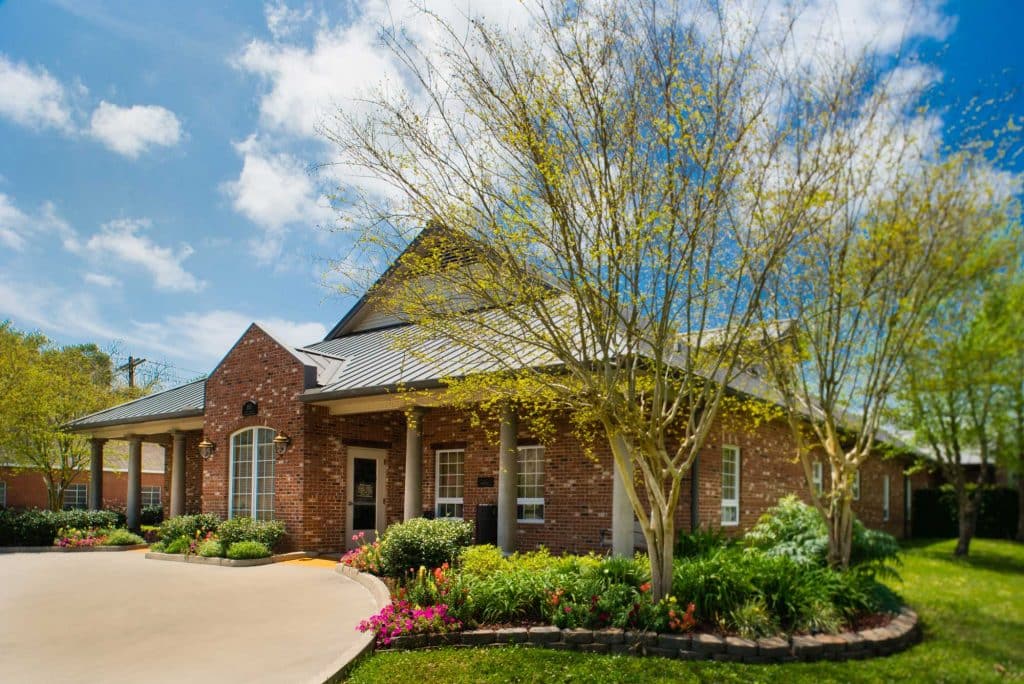You’ve heard the patient complaints many times.
If you’ve been a patient in your own healthcare facility, you’ve even complained yourself.
“Your hospital is too noisy, either too dark or too bright, and just plain sterile. If I get any chance to look outside, all I see is concrete. How am I supposed to get well in an environment like this?”
What a great question.
Fortunately, hospital administrators, architects, designers and product manufacturers are listening. Caring for patients has always been a top priority. And today, caring healthcare environments are too.
It’s a Matter of Simple Biology
Thirty years ago, E. O. Wilson popularized the term biophilia to describe human interaction with nature. Critics of naturalist Wilson’s concepts are easy to find. So are those who wisely incorporate some of his ideas into their building designs. Today, we thread biophilic design principles throughout structures devoted to human wellness.
A natural environment relieves stress and promotes healing.
Patients have directed healthcare professionals to ask the same kinds of questions patients ask of them. “What can we do about noise, light and this clinical environment?” So, what does the latest research tell us about adaptive technology, natural environments, and the need to create the healthiest spaces for patients?
1. Fix the Noise Problem
Is it necessary to hear nurse station conversations in each patient room? Must patients listen to gatherings of professionals and visitors in the halls? And what about noisy equipment? Can anything be done about it?
One acoustic engineering firm suggests that, by following LEED for Healthcare guidelines, architects can do a great deal to address noise concerns. They recommend the following:
- Isolate sound between rooms
- Control background noise levels
- Adjust time reverberation within interior spaces
- Minimize exterior noise inside the patient rooms
Correcting noise problems even aids in patient privacy, a related benefit and potential HIPPA concern.
Healthcare architects pay special attention to room arrangements and the location of plumbing fixtures. The location of nurse stations, break rooms and elevator banks, wall finishes recommendations and selected textures and soundproofing. In addition, product manufacturers create materials especially conducive to comfort and privacy, advancing the healing process.
2. Enhance Artificial Light
Typically patient rooms have provided subdued lighting, created shadows and inadequately lit patient, visitor and attendant areas. Corners are generally dark and visitors often chat from the shadows. But opening curtains and shades can often yield too much light, even when patients want the outside in.
And yet, that natural, outside light offers the promise of healing.
The human body tends to respond positively to natural light. Employing the principles of dynamic lighting, the Philips HealWell lighting system creates an indoor environment that replicates natural light and is adjustable. Patients and staff can flood a room with healing natural light or limit it. They can pick and choose to control the room.
- The system can be set to mimic the properties of Dawn, Mid-afternoon or Dusk.
- And the system can certainly be set to replicate Night.
3. Refine Natural Light
To address the concerns of natural light special glass can control the amount of natural light allowed into patient rooms from the outside. As the manufacturers note, the benefits are many.
- Dynamic Glass responds to the outside world
- Tints are variable and controllable
- Various building facades can even be programmed differently, in rotation with the movement of the sun to manage natural light throughout the day.
Letting in the healing power of natural light—and the ability to control it—assists in patient comfort and healing. And letting in an outdoor view can even ease stress.
4. Bring the Natural World to View
Anyone who knows the urban landscape has experienced a typical view: Look out the window and gaze directly into an apartment or office across the way. Maybe there’s nothing but a brick wall. You might even be greeted by a row of turbines, transformers or generators.
Patients in recovery want to be reminded of what awaits them when they leave. The joy of being outside. A chance to walk down the street. To enjoy a breeze. Flowers still growing in damp earth.
What if patients could enjoy a view of that future—the anticipated beauty of the natural environment.
Many can, and many do.
A recent issue of Medical Construction and Design Magazine (MCD) reminded me of the healing properties of the natural world. “Our natural love for life helps us sustain life.”
As the editors noted, “Almost every modern cancer center integrates some type of healing or meditation garden into its design in order to incorporate the life-affirming benefits of connecting with nature into the continuum of care.”
Recovering stroke patients often have to walk sterile halls in austere facilities. Adding an indoor atrium, complete with healthy plants and flower gardens can stimulate healing, just as outdoor gardens and shaded seating areas promote healing for those able to walk outside.
As healthcare administrators and architects regularly implement biophilic design ideas, the benefits of a truly healing environment bear fruit.
Restoring patient health is the goal of every healthcare worker.
We create a healthy environment to help in this endeavor.

